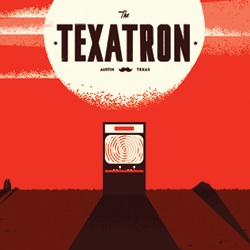ONE MORE GO: IKARUGA, THE BIG ENEMY IS APPROACHING
One of the most enduring relationships I have is with four men I’ve never met. Seven years ago, Hiroshi Iuchi, Atsutomo Nakagawa, Yasushi Suzuki and Satoshi Murata created Ikaruga, the spiritual successor to Treasure’s majestic Radiant Silvergun. Ikaruga is what some people call a top-down, vertically scrolling, combo-based, arcade shoot-’em-up. What I call it is art.
Now, the whole ‘what is art and are we it yet and if we are can we have a cookie?’ is one more futile arguments generated by videogames. It’s not a useful question, for many obvious reasons, but there is one answer to it that I rather like. It goes like this: the hallmark of good art is that every time you go back to see it, it’s changed. Or rather, it hasn’t, but you have, so through viewing it you’re able to measure and identify the changes within yourself. It’s as good an answer as any other to the great unresolvable what-is-art conundrum, and if you apply it to videogames, then my Mona Lisa is Ikaruga. Beautiful, enigmatic, alluring and unmasterable. (more…)
See more posts about: Offworld Originals, One More Go
ONE MORE GO: NEW YORK TIMES CROSSWORDS
“7 DOWN (5 letters): Donkey Kong company”
The swells of the end-of-year gaming surge are still carrying me out to sea, the living room floor strewn with the wreckage of Fable 2, Resistance 2, Little Big, Mirror’s Edge, Gears Of War 2, Left 4 Dead and an unopened copy of Moto GP ‘08 I found in amongst the cookery books. The tide is showing no signs of turning, sweeping me out further and further, later and later each night. But somehow, every evening, I struggle back to shore, to my safe, sheltered, gaming harbour: BudCat’s New York Times Crosswords. Despite Valve’s millions, EA’s blanket media blitz and Sony’s increasingly unlikable promo Sackboy variants, every evening ends with me grabbing my DS and firing up an 18-month old game which opens with a inept cartoon of a vomiting cat.
But why? What could a game with no score, no story, no spectacle, and no real character beyond the vomiting cat (BudCat may well have reworked their ident since their recent acquisition by Activision) have to lure me away from the riches of this Autumn’s release list? The simple answer: clues like the one above. And yep, that’s a real clue from a real New York Times Crossword. Reading it, all you know for certain is there are only two people in this deal – you and the guy who wrote the clue – and one of you is being really, really dumb. Donkey Kong company. Five letters. Could it be a trick? Some clever crossword subtlety you’re missing?
Or has the esteemed New York Times got its Japanese heavyweights confused – all the more understandable when you allow these puzzles were compiled a good few years before the Wii comeback coup – and wants you to commit the sacrilege of inscribing ‘NAMCO’ into the spaces? And that takes you into a very satisfying game of second-guessing. Would the not-very-videogame-savvy crossword designer be more likely to have heard of Namco or Taito? Could they have asked the advice of their Sony-loving 12-year-old and been told, disparagingly ‘Ninty’?
Then: curve ball. Solving another clue gives you a terminal ‘I’. I? Weird. Unless…unless. No, can’t be. Couldn’t be. They’re not even Japanese! But yes, what fits is Atari. And suddenly, with a single, trivial oversight, the New York Times rewrites gaming history. Suddenly, instead of Pong, Nolan Bushnell unleashes a stark, monochrome rescue challenge on the world. AVOID MISSING PRINCESS FOR HIGH SCORE burns itself into the brains of a generation. A couple of sequels expand the world of this strange new hero and, keen to bring its popularity to bear on the 2600, Atari execs strong-arm Warren Robinett into populating Adventure with mushroom monsters and making the green dragon friendly.
The new franchise becomes so popular, that – at the last minute – the decision is taken to stop development on E.T. the Extra-Terrestrial and instead divert full resources to Mario’s Revenge, a hypnotic shooter in which the plucky plumber must shoot fireballs through a dazzling, kaleidoscopic barrier while dodging Donkey Kong’s laser-barrels.
Mario’s Revenge is such a huge hit it leads to the Great Videogame Surge of 1983. With its vast resources of cash, Atari bring forward development of its revolutionary Lynx handheld, which – thanks to the popularity of Mushroom Kingdom Games, which features goomba-skimming, piranha-plant-vaulting and dinosaur racing – outsells the Game Boy ten-to-one. Nintendo, resources depleted after losing successive court battles, drops out of the videogame industry. Atari, looking to consolidate its home entertainment empire, diverts a fraction of its massive wealth to buy television manufacturers Sony, resuscitating the failing Betamax format in the process.
And on and on we go. From one slip of a crossword compiler’s pen, I get thirty years worth of games I’ve never played, machines I’ve never touched, and crossovers I’d never imagined (who can forget when Bronson Pinchot lost out to Charles Martinet for the part of Larry Appleton’s countrified Mushroom Kingdom cousin in Perfect Strangers?). How could the combined might of Sony, EA, Microsoft and Valve ever match that? Although, if they could give me a hand with 46 DOWN (6 letters): In cubbyholes (S blank R blank) I promise I’ll get back to Albion, asap.
[Margaret Robertson is the former editor of Edge magazine and now videogame consultant. One More Go is her regular Offworld column in which she explores the attractions of the games she just can’t stop going back to.]
See more posts about: Offworld Originals, One More Go






